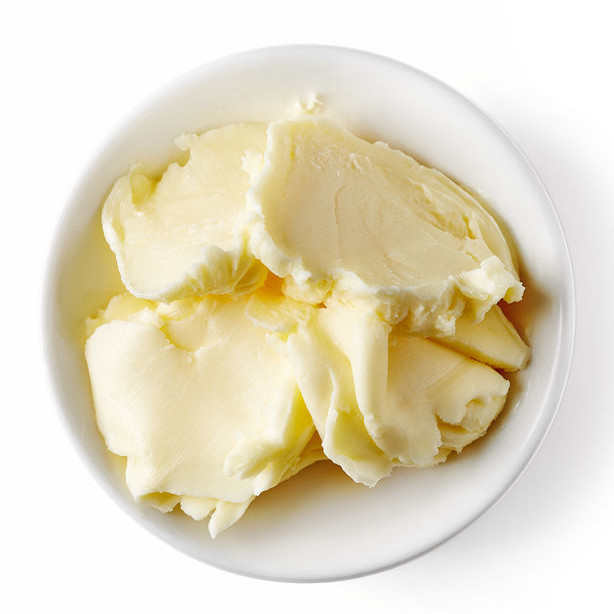
Fats Spec Sheet
Also known as specifications for fats
What is a Fats Spec Sheet?
A fats spec sheet is a document which defines and communicates the technical requirements for fats and oils that bakery suppliers must comply with. Along with specifications for wheat flour, liquid whole eggs, or yeast, a spec sheet for fats and oils represents the first line of defense in any bakery’s quality assurance program.
Specification sheets for fats may also include the following:
- Specialty or all-purpose shortenings
- Margarine
- Butter
- Vegetable, canola or sunflower oils
How it works
A fat spec sheet should provide maximum, minimum and target values for each technical parameter or physicochemical property related to fat quality. It should also contain storage and use instructions, as well as relevant information that the bakery may need upon request.
Fats are used in small or large amounts in almost every single bakery product, ranging from chemically-leavened sweet goods, such as cakes, to yeast-leavened goods, such as whole wheat bread, croissants and hamburger buns.
Application
A fat spec sheet should contain the following information (divided into 15 sections):1,2
- Product definition: Cake shortening, all-purpose shortening, olive oil, or butter
- Origin or source: Animal and/or plant (vegetable) origin should be specified.
- Comprehensive section: This section should include details on fat production/refining conditions, e.g. bleaching, solvent extraction, hydrogenation, deodorization, cold pressing, etc.
- Production process flowsheet (PFD)
- Regulatory information: Compliance with 21 CFR Parts 166, 170, 182, 180
- Food safety information: Includes any information relevant to consumer safety, such as allergenicity of dairy components (for butter), pressed soy oil, etc.
- Kosher or Halal designation (if applicable).
- Organic designation (if applicable). A certifying agency and a certification date or code should be provided in this section.
- Non-GMO and/or clean label designations (if applicable based on local regulations
- Sampling plan for analysis. This section should describe:
- The procedure for obtaining samples for analysis (in bulk or discrete amounts)
- Frequency of analysis (daily, per shipment, etc.)
- Number of samples required
- Information as to how the samples are physically collected
- Acceptance criteria. This section should include:
- Physical and organoleptic parameters: Solid crystalline structure, relative density, refraction index, melting point, smoke point (key for baking pans oil), fire point, viscosity of oils, taste, color and smell.
- Analytical or physicochemical parameters: Composition of shortening blends, moisture content (for butter and margarine), saponification index, free fatty acids (FFA), peroxide value, iodine value, oil stability index, fatty acid distribution (% saturated, % unsaturated, % poly unsaturated), FA profile, cholesterol content, trans FA, antioxidants added
- Lipoxygenase and lipase activity
- Heavy metals specifications (traces of copper, lead, arsenic, in ppm or ppb)
- Maximum, minimum, target values (or range) for each technical parameter
- Testing procedures required for supplier analyses
- Specification of the approved methods for the analyses / test
- Procedure when a test is out of specification. This section should describe what actions should be taken when an analysis is out of specification.
- Dosage recommendations. Should include the amount in baker’s % to add according to type of product.
- Recommendations regarding storage conditions. Temperature and relative humidity should be specified in this section.
- Shipping, packaging and shelf-life information:
- Accurate and relevant details on how the fat, oil or shortening is handled and transported to the bakery should be provided here.
- Shelf-life according to recommended packaging and storage conditions.
- Pallet configuration for shipments, in bags or boxes (bags/boxes per pallet, bags per layer, gross weight per bag, pallet dimensions, etc.
Impact of Iodine value and other properties of vegetable oils and fats on their health scores 3,4
| Vegetable oil |
Iodine value (g I2 / 100 g sample) |
Saturation of FA / Oxidative stability | Melting point | Health status |
|---|---|---|---|---|
| Linseed / flaxseed | 155 – 205 | Highest in UFA / Least stable / Shortest shelf-life | -24oC (-11oF) | +++++ |
| Corn Oil | 103 – 128 | High in UFA / Low stability | -11°C (12°F) | +++++ |
| Peanut Oil | 82 – 107 | High in UFA / Low stability | 3°C ( 37°F) | ++++ |
| Groundnut Oil | 86.0 | High in UFA / Low stability | 3°C ( 37°F) | ++++ |
| Olive Oil | 81.0 | High in UFA / Low stability | -60°C (21°F) | +++ |
| Palm Oil | 53.9 | Balance between UFA and SFA / Intermediate stability | 35°C (95°F) | ++ |
| Palm Kernel Oil | 36.7 | High in SFA / High stability | 24°C (75°F) | + |
| Butter | 20 – 40 | High in SFA / Stability limited by endogenous enzyme activity and water content | 32–35°C (90–95°F) | + |
| Coconut Oil | 10.0 | Highest in SFA / Most stable / Longest shelf-life | 25°C (77°F) | + |
+++++ indicated healthiest oil
+ indicates least healthy oil
References
- Nielsen, S.S. “Introduction to Food Analysis.” Food Analysis, 5th edition, Springer International Publishing, 2017, pp. 3–15.
- Wassell, P. “Bakery Fats.” Fats in Food Technology, 2nd edition, John Wiley & Sons, Ltd, 2014, pp. 39–77.
- Unyime Ebong, Christopher. (2019). A comparison of iodine values of some co. 10.13140/rg.2.2.24160.02560.
- T.H. Sanders. “Ground Nut Oil.” Encyclopedia of Food Sciences and Nutrition, 2nd Edition, Academic Press, 2003, pp. 2967–2974.

